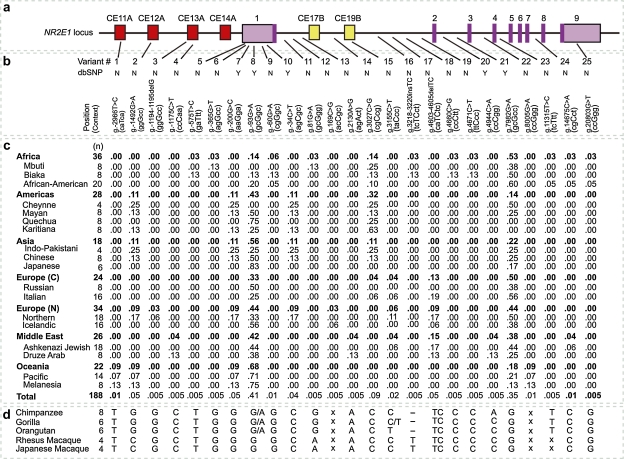Figure 1:
A few common and many rare NR2E1 variants detected in human populations representative for global diversity. (a) Functional and putatively functional regions of NR2E1 were resequenced, including coding (dark purple boxes), 5′- and 3′-untranslated (light purple boxes), and human non-coding regions that are conserved (Abrahams et al. 2002) in mouse (CE-A; red boxes) and mouse and Fugu (CE-B; yellow boxes). (b) A total of 26 variants was identified (variants 1–25 and CA-repeat, see Fig. 2). The nucleotide in the first position represents the human major (i.e. consensus) allele. Numbering based on Antonarakis and the Nomenclature Working Group (Antonarakis 1998), where A of the initiator Met codon in exon 1 is denoted nucleotide +1. Human genomic NR2E1 sequence: AL078596 (http://www.ncbi.nlm.nih.gov/). Variants catalogued in dbSNP (‘Y’) are distinguished from those that are newly discovered here (‘N’). The DNA context of each variant is shown. (c) The number of chromosomes surveyed (n) and minor allele frequencies for each variable site are indicated for 18 world populations. (d) The corresponding chimpanzee, gorilla, orangutan, rhesus macaque, and Japanese macaque alleles are indicated. ‘x’ indicates that no sequence was obtained due to failed PCR or sequencing reaction. ‘−’ indicates that no corresponding nucleotide was present at that position in the non-human primate.

